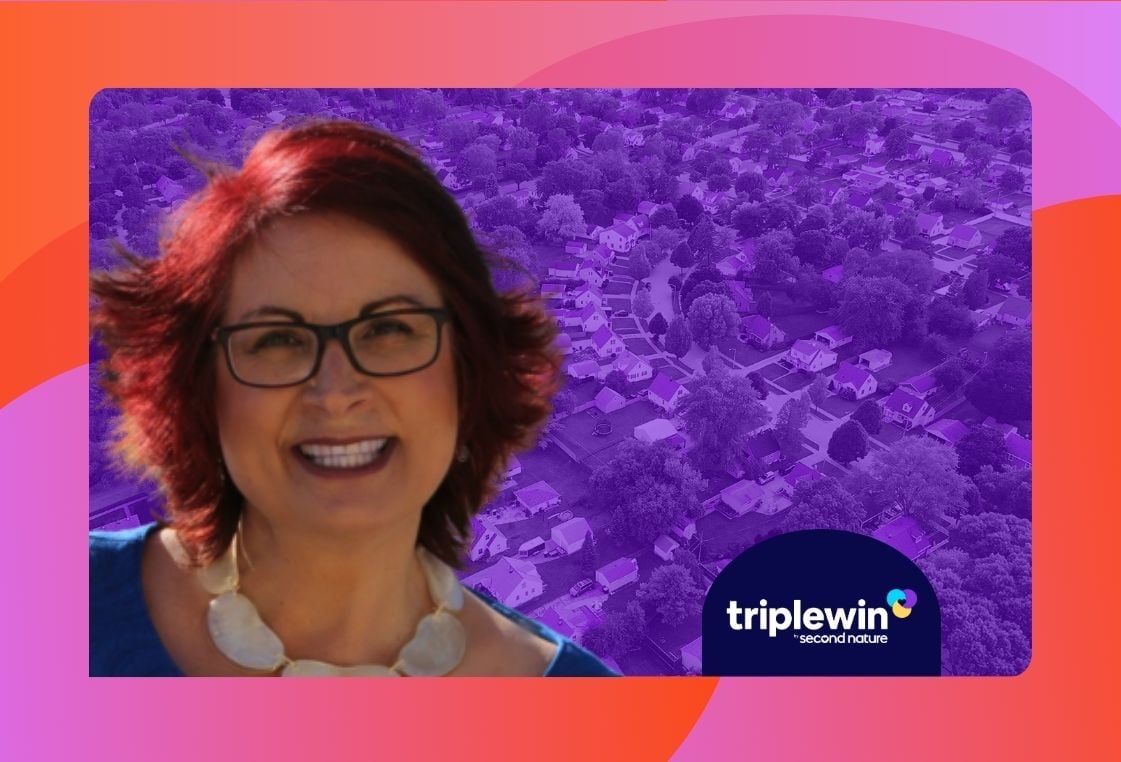What we'll cover
Why is the tenant onboarding process important?
Steps to onboard new tenants
1. Run background checks, collect and verify all tenant information
2. Explain the lease and sign the agreement
3. Collect payments and security deposits
4. Share copies of electricity and gas safety certificates
5. Schedule move-in
6. Prepare the property for move-in day
7. Deliver keys and share property manager contact information
8. Leave a welcome message, card, or gift pack for the tenant
9. Follow up after one week with the onboarded tenant to get feedback
10. Schedule periodic rental inspections with the tenant
Tips to improve the tenant onboarding experience
Final thoughts
FAQ
The tenant onboarding process is a critical step in ensuring a positive and productive relationship between residents and property managers from day one and usually occurs during the lease signing.
For property management companies, new tenant onboarding represents a cornerstone of the "Triple Win" philosophy we advocate here at Second Nature.
That's because an optimal process benefits all parties. As we mentioned, not only does a smooth onboarding experience foster tenant satisfaction, but it also delivers winning conditions for a positive tenant who is excited about their new home. It also recognizes their role as property residents rather than transactional entities and sets a positive tone for their experience with the property.
On the part of the property management company, it also demonstrates professionalism and competence, which not only boosts your brand, but also enhances your ability to attract potential tenants in the future.
Finally, it protects the real estate property owner. Clear communication of lease terms, expectations, and maintenance procedures helps reduce the risk of issues such as late payments, property damage, or misunderstandings.
But how do you actually optimize the onboarding process? Today we'll look at standardized procedures you should implement to ensure consistency and a positive outcome for all.
Note on language:
"Tenant onboarding” is a commonly used industry term, but at Second Nature we're trying to evolve the word "tenant." We’ve seen the incredible work property managers do day in and day out to make renters feel like they’re so much more than just a tenant – they’re residents. Making renters feel like residents isn’t just philosophical, it also encourages them to invest in care for their home and add value to the property. This is why, at Second Nature, we prefer to call tenants “residents.” Like you, we think of them as people first – making your property their home.
Why is the tenant onboarding process important?
The tenant onboarding process is important because it sets the stage for the entire tenancy experience.
Proper onboarding helps make sure that residents are well-informed about their responsibilities, as well as the property management company's expectations, which can lead to fewer misunderstandings and conflicts down the road. It also helps build and maintain a strong relationship between the resident and the property management team, which can lead to higher resident satisfaction and retention rates, which is especially beneficial to PMs.
By creating a positive first impression, the onboarding process can significantly impact the long-term success of the rental arrangement for all parties involved.
Steps to onboard new tenants
While the only hard and fast rules you need to follow are determined by local laws, here are some key steps you'll want to make sure you're taking as you onboard your new residents and seek to foster a successful resident relationship:
1. Run background checks, collect and verify all tenant information
The onboarding process starts with thorough tenant screening and background checks on prospective renters. The process of ensuring the accuracy of tenant information can be time-consuming, so this is where you will realize the greatest efficiencies as you optimize the process.
Start by leveraging screening and credit check/credit score service providers to assess a tenant's financial responsibility and ability to meet rent payments, as well as identify any prior evictions or tenancy issues. Criminal background checks, run in accordance with fair housing laws and anti-discriminatory practices, can uncover potential red flags that may represent risks to the property or other tenants.
You should also use standardized application forms that clearly request information, such as:
- Full legal name, contact details, and date of birth
- Employment information and income verification (via recent paystubs or employer contact details)
- Previous rental history, including contact details of prior landlords
- Emergency contact information
Directly contact previous landlords and employers to confirm details provided by the prospective tenant, and verify the government-issued photo ID (driver's license or passport) they supply to confirm their identity.
Consider offering an online application portal where tenants can submit their information and upload important documents securely. This allows for faster processing and reduces manual data entry (and therefore reduces the risk of errors).
Again, ensure that all screening processes comply with fair housing laws to avoid discrimination based on protected characteristics.
Related: Tenant Screening Checklist: Free Template and Form Example
2. Explain the lease and sign the agreement
It's critical for all parties that you be transparent and clear about lease terms. To achieve this clarity in a repeatable, standardized way, consider structuring the process into four distinct stages:
(i) Pre-signing review
Schedule a dedicated time with the tenant to review the lease agreement. In the agreement itself, it's important to use clear, concise, and plain language that avoids legal jargon. Explain each clause, addressing key points like rent amount and due date, security deposit details and return policy, allowed usage of the property and any restrictions (such as pets or modifications), maintenance responsibilities of both the tenant and the property manager, and termination clauses/notice periods.
(ii) Addressing concerns
After the pre-signing review, proactively invite questions and address any areas of confusion or concern. Have supplementary materials and any other necessary information readily at hand, such as property manuals or tenant handbooks.
(iii) Lease signing process
Consider offering the option of secure e-signatures for a convenient and efficient signing experience, but do ensure readily available hard copies of the lease for traditional in-person signing preferences.
(iv) Post-signing follow-up:
Present tenants with a signed copy of the lease agreement for their reference. At that point, you should outline the next steps, such as payment details (more on that below) move-in date and procedures, utility setup details, and contact information for maintenance requests or emergencies.
3. Collect payments and security deposits
An efficient tenant onboarding process will prioritize secure and convenient methods for tenants to submit their security deposit and rent payments. Naturally, this starts and ends with clear communication. If you have not covered this in the context of the lease agreement, do so now: Clearly outline all available payment methods, as well as rent due dates, late fee structures, and any associated payment processing fees.
It's helpful to provide flexible payment methods. Options include secure online portals (whether hosted on your site or by a third-party payment processing provider) that allow tenants to pay using debit cards, credit cards, or e-transfers. This option presents multiple advantages, including automatic recurring rent collection, online receipts for all transactions, and a record of payment history for easy reference.
You can also offer the option of direct bank transfers between the tenant's account and the accounts of your property management company.
For technology-averse tenants, you may find it necessary to offer traditional payment methods such as cashier's checks or money orders, which provide a secure way for tenants to submit payments without the risk of personal check bounces.
When it comes to security deposit handling, compliance is key. You must adhere to all local and state regulations regarding security deposit amounts, holding periods, and interest accrual (if applicable). It's helpful to hold security deposits in a separate account designated solely for this purpose. This demonstrates transparency and protects tenant funds.
4. Share copies of electricity and gas safety certificates
While some regulations require property managers to make electricity and gas safety certificates available on request, in certain jurisdictions, the property management company may be legally obliged to provide them during the onboarding process. Always consult with local regulations and ensure compliance to avoid any legal issues.
In any case, by proactively providing copies of safety certificates, clearly explaining their purpose, and maintaining proper records, property management companies demonstrate a commitment to tenant safety and uphold a high standard of professionalism. This fosters trust and transparency throughout the tenancy.
While the certificates indicate the overall electrical and gas safety of your rental property, as well as any potential hazards, they also emphasize the tenant's responsibility to report any observed issues or concerns promptly.
5. Schedule move-in
To efficiently schedule the move-in, inquire about the tenant's preferred move-in date and time frame during the lease agreement signing process.
If you're offering a few available move-in windows, strive to accommodate their preferred date and time, as this demonstrates your commitment to tenant satisfaction. If the tenant's preferred date is unavailable, propose options that minimize disruption, such as an earlier or later move-in time within the same day.
Once a mutually agreeable move-in date and time are established, send a confirmation email or document outlining the details as well as a move-in checklist.
Note that Second Nature includes a move-in concierge as part of its Resident Benefit Program.
6. Prepare the property for move-in day
The onboarding process culminates in a meticulously prepared property for the tenant's arrival.
Start by conducting a pre-move-in inspection and cleaning. This covers the entire property, including:
- Floors, windows, and all surfaces.
- Appliances
- Bathrooms and kitchens
Ensure that all smoke and carbon monoxide detectors are operational, and have fresh batteries. Also, address any outstanding maintenance or repair requests, and verify that all applicable utilities are functioning properly. You'll want to take any meter readings in the presence of the tenant during the move-in process.
Consider providing small "welcome amenities'' (toilet paper, tissues, light bulbs, and so on), as well as a welcome packet that includes contact details, important property information, trash collection schedules), and emergency procedures. Such gestures foster a sense that the property is being managed with care.
7. Deliver keys and share property manager contact information
While the process of delivering keys and sharing contact information may seem trivial, it's an excellent occasion to once again demonstrate your professionalism and care for the property.
First, coordinate a convenient time for the tenant to pick up their keys. This can occur during a move-in walkthrough or previously. Consider offering flexible options for key collection, such as collection of keys from the property management office, or secure drop-off at the property, if this is feasible.
Maintain a record of the specific keys issued to the tenant. If the property utilizes key fobs or electronic access systems, ensure the tenant receives proper instructions and activation procedures.
As far as contact information goes, provide the tenant with various contact methods, including any dedicated phone lines for tenant inquiries and maintenance requests, email addresses for non-urgent communication, and access to an online tenant portal (if applicable) for rent payments, maintenance requests, and communication.
If you have not already done so, outline your operating hours and response timeframe for inquiries and maintenance requests. Provide a separate after-hours emergency contact number for urgent situations.
8. Leave a welcome message, card, or gift pack for the tenant
While not essential, incorporating a personalized touch during the onboarding process can significantly enhance the tenant's experience.
For instance, a brief handwritten note left at the property upon move-in adds a personal touch, as does a warm welcome email. Such a message can express that the tenant has chosen your property, offer availability to answer questions, and reiterate important contact details for the tenant's reference.
Professional greeting cards with similar messages are also an effective way of enhancing your brand, particularly when co-branded with local restaurants and grocery stores to offer discounts or coupons.
Another option consists of gift packs containing small, practical items such as basic toiletries, coffee/tea, baked goods, or cleaning supplies.
Ensure that any message, card, or gift reflects a professional tone and avoids overly personal greetings.
9. Follow up after one week with the onboarded tenant to get feedback
An optimal onboarding process extends beyond the initial move-in. Following up with the resident after a week demonstrates your company's attentiveness and professionalism, and goes a long way toward boosting retention rates.
Schedule a follow-up call or email approximately one week after the tenant has settled in (at which point they will have become well acquainted with the property). A call allows for a more personal touch and enables the tenant to voice any concerns directly, while an email gives them the flexibility to respond at their convenience, as well as providing a written record of the communication.
Sample wording might go along the lines of: "I hope you're settling in well at [property address/name]. Is there anything we can help you with?" or "We hope everything is going smoothly after your move-in last week. Do you have any questions or concerns we can address?"
Remind the tenant of the various contact methods available for the property management company, and address any raised concerns promptly to demonstrate your willingness to assist in resolving issues.
You may also wish to consider incorporating a brief tenant satisfaction survey into the follow-up email, if you've chosen this approach. This can provide valuable insights into areas where the onboarding process can be further improved.
10. Schedule periodic rental inspections with the tenant
A crucial aspect of responsible property management involves conducting periodic inspections. Here's a professional approach to scheduling these inspections while fostering a positive relationship with the resident.
Clear communication is paramount. It's important that you outline the frequency and purpose of inspections within the lease agreement, and explain the rationale behind inspections, emphasizing property maintenance and ensuring tenant safety.
Of course, you'll reserve the right to conduct immediate inspections in case of emergencies or suspected violations of the lease agreement. However, prioritize informing the tenant whenever possible, and always adhere to local and state regulations regarding the frequency and notification requirements for rental inspections.
Before scheduling an inspection, provide ample written notice. This allows residents to prepare the property and minimizes disruption. As necessary, work with the tenant to find a mutually agreeable date and time for the inspection.
Allow the tenant to be present during the inspection, and limit the inspection to the essential aspects, avoiding intrusion into personal belongings. Download our rental inspection checklist to ensure you’re covering all the bases.
Then, provide the tenant with a copy of the inspection report, highlighting any findings or maintenance needs.
Tips to improve the tenant onboard experience
A smooth and efficient onboarding process can set the stage for a positive tenant experience. Below are some helpful tips:
Create a property management tenant onboarding checklist
A comprehensive tenant onboarding checklist helps ensure that no critical steps are overlooked. This checklist should include all tasks, from initial background checks to the final move-in day preparations. This will help maintain consistency and efficiency in your onboarding process, and ensure that every resident receives the same high level of service.
Create a welcome package for new onboarding tenants
A welcome package can make new tenants feel appreciated and valued right from the start. It can include practical items such as toiletries, cleaning supplies, baked goods, and information about the local area. Personal touches such as a handwritten welcome note or discounts to local businesses can also enhance the resident’s initial experience, as well as the image of your property management company.
Use technology to streamline processes
Utilize technology to streamline the onboarding process. Offer online applications, e-signatures for lease agreements, and an online portal for rent payments and maintenance requests. Technology can make the process more convenient and efficient for both property managers and residents, and easier for PMs to manage the status of everything.
Dedicated tenant onboarding software, like Second Nature's Resident Onboarding, can help communicate essential information, help residents better understand rules, responsibilities, and expectations, and customize the resident benefits that you offer.
Personalize the experience
Personalizing the onboarding experience can make residents feel valued and welcome. Address them by name, remember important details about them, and provide personalized touches such as a welcome note or small gift.
Final thoughts
Remember, an onboarding process is not just a series of steps; it's a tool to enhance communication, establish expectations, and create a positive resident experience.
Our top recommendation for ensuring a world-class resident experience is to build a resident benefits program. Second Nature has pioneered the only fully managed Resident Benefits Package for single-family property managers.
Learn more about resident experience management in our State of Resident Experience Report, or explore the benefits of a Resident Benefits Package.
FAQ
What is tenant onboarding and why does it matter?
Tenant onboarding (or resident onboarding) is the process of welcoming new residents, reviewing lease terms, collecting payments, and preparing the property before move-in. A smooth onboarding process sets expectations, builds trust, and reduces issues later in the lease.
How is a resident different from a tenant?
At Second Nature, we use the word “resident” because renters are more than just tenants. Thinking of them as residents emphasizes their role as people making your property their home, which fosters stronger relationships and long-term retention.
What steps are included in the tenant onboarding process?
The process typically includes screening and background checks, explaining and signing the lease, collecting rent and security deposits, sharing safety certificates, scheduling move-in, preparing the property, delivering keys and contact info, providing a welcome message or gift, following up after move-in, and scheduling periodic inspections.
Why are background checks important during onboarding?
Background and credit checks help verify tenant information, assess financial responsibility, and identify potential risks. This protects property owners while ensuring a safe and secure community.
What should be explained during the lease signing?
Lease signing should cover rent amounts and due dates, deposits, property use rules, maintenance responsibilities, termination clauses, and payment processes. Transparency prevents future misunderstandings.
How should security deposits and rent payments be collected?
Offer secure and flexible options such as online portals, direct transfers, or checks. Always comply with local/state laws regarding security deposit limits, storage, and refunds.
What documents or certificates should new tenants receive?
Residents should receive electricity and gas safety certificates (where legally required), lease copies, and any property manuals or welcome packets. Providing these documents promotes safety and transparency.
How should property managers prepare the home before move-in?
Managers should inspect and clean the unit, test appliances, replace detector batteries, take utility meter readings, and provide essentials like trash schedules and emergency contacts.
How can property managers create a great first impression?
A welcome gift, handwritten note, or branded package with local coupons adds a personal touch and shows residents they’re valued from day one.
Should property managers follow up after move-in?
Yes. Following up within a week helps identify concerns early, boosts satisfaction, and strengthens trust. A short call or survey can provide valuable feedback.
Why are regular property inspections necessary?
Periodic inspections help maintain property condition, ensure resident safety, and prevent costly damage. Always provide proper notice and comply with local regulations.
How can technology improve tenant onboarding?
Online applications, e-signatures, payment portals, and resident portals streamline the process, reduce paperwork, and create a smoother experience for both managers and residents.
Topics:




